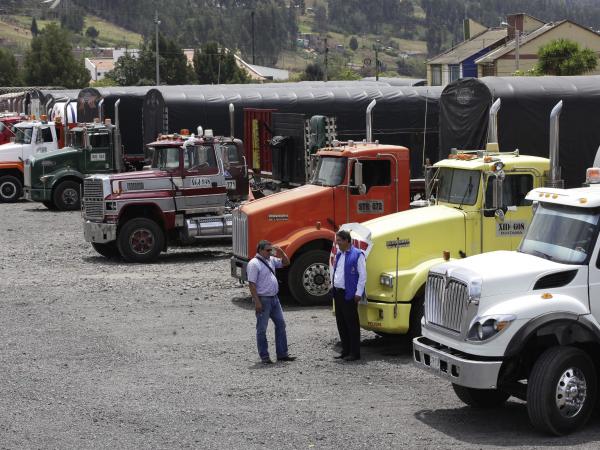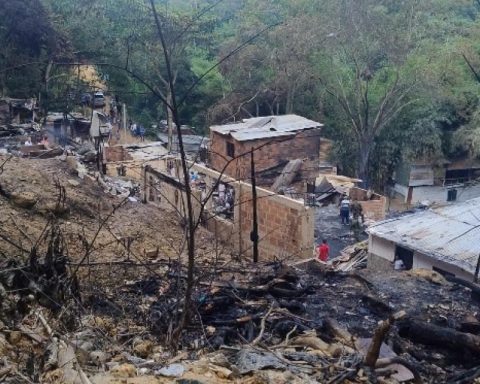This weekend the National Administrative Department of Statistics (Dane) delivered the inflation results for November, which rose to an annual variation of 5.28%, especially for the food item.
(Products that contributed the most to the rise in inflation in November).
However, the price increase has not hit all cities in the same way, and factors such as the national strike that occurred in May, transportation in the regions, and the weather, have had a special impact on the prices of the main capitals.
The city with the highest data in its annual variation is Montería, according to Dane, The capital of Cordoba registered an annual variation in the prices of the basic consumer basket of 8.19% in November, where the increases in food (13.49%), restaurants and hotels (6.64%) and clothing and footwear (6.56%) stand out.
In addition, in Pasto there is an annual increase of 8.11%, where the variation of food is 14.96% and transportation is 6.93%. According to Fidel Díaz, a professor at the University of Nariño, there are several reasons that have led inflation to reach this figure in the capital of Nariño.
(Annual inflation to November rose to 5.26%).
“In the first place, the permanent blockade that the indigenous communities of Cauca have, which block the transport of products that are manufactured in the interior of the country. The other thing is that due to the rains, the highways have deteriorated a lot, especially the Panamericana, between Pasto and Popayán, which makes transportation costs very high “, explains the economist.
According to Díaz, another factor that helped keep inflation stable was “The import, both formal and informal, of staple products from Ecuador, but with the closure of the border there has only been contraband, which has caused prices to increase”.
In the same region, Popayán is another of the cities that have inflation above the national total, with a figure of 6.78%. There, while food inflation is at 18.62%, that of other items such as education already rises to 16.3% and that of restaurants and hotels to 11.38%.
“We, Cauca and the southwest, were not only hit by the pandemic, but between April and May we had the problem of unemployment. The impact was in the commercial sector, industries, transportation, all sectors were hit, so with a paralysis like these there were companies that even made the determination to leave Cauca, and that directly impacted prices in the area “, said Beatriz Castillo, executive director of Fenalco Cauca.
Other cities that stand out for high annual inflation as of November are Florencia (7.74%), Riohacha (7.6%), and even Medellín (6.79%).
(Inflation, prices and minimum wage).
The latter, however, and according to César Tamayo, dean of Economics at Eafit University, “In the month of November it had the lowest monthly inflation rate, 0.35%, which makes its inflation rate for the year (11 months to November) the third lowest in the country (4.5%)”.
Despite this, Tamayo acknowledged that there are some factors that can affect the price indicator. “If it’s food, something it can be associated with is the weather and the fact that the roads in Antioquia are very susceptible. When there are weather events for long periods of time, the roads and accesses to Medellín begin to fail, and the city has roads under construction in several directions “.
On the other hand, cities such as Bogotá, with an annual inflation of 4.97% for November, Barranquilla, with a figure of 4.34% and Cartagena De Indias (4.29%), are those with the lowest increases in their prices for the last year.
“There are cities with greater dynamism and greater reactivation, which perhaps leads to differentiation in price growth, while in cities in which they may have greater shortages or supply problems, it is surely more reflected in an increase in prices. It may not be a typical flow of goods and trade in some ”, explained Carlos Sepúlveda, dean of the Faculty of Economics of the U. del Rosario.
FOOD, THE PROBLEM
One of the main complications that has been occurring in inflation, and that continues to push prices upward, is the increase in food prices, which have one of the highest pesos in the basket of Colombians.
According to the Dane, at the national level, the increase in prices for this item is 15.34%, and these also indirectly affect other categories such as restaurants and hotels (8.24%).
Likewise, if the inflation data is reviewed, isolating the effect of food, it is perceived as the annual variation of the Consumer Price Index (CPI) to November is only at a level of 3.37%.
BRIEFCASE

















